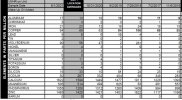Mr.Grid
Well-Known Member
Injection can be noisy and varying in sound at idle. Exact same for the Hemi valve train tic if present at idle. The dealer will listen to all this at idle and say “this is normal” which it is. Chrysler posts the same response to Hemi tic in writing. At normal driving speeds you won’t hear any of this as the oil pressure is increased by over 20psi from idle and injection cycling becomes much faster. Besides, you spend the majority of time behind the wheel where it’s quiet, instead of under the hood like another.I usually tell people that warranty work may be an issue. If I didn't do that earlier in this specific thread, then that was an oversight, but I'm not going to mention it in every single post on this topic either.
My opinion on RL though, is that it is the best oil for the hemi, due to hemi tick.
sb thinks (knows) that because Hemis can tic at idle that this is a problem. His Delusional Hearing goes even further and he can detect it at (fill in the MPH you want) driving speeds. In goes the magical ($10 qt) RL at (you pick weight) and POOFFFFTT…… instantly quiet at any speed or idle. Now sb been spewing this as his (Non API Approved, Wrong Factory Weight) fix for only he knows how long, when in fact there was never a problem. Millions of Hemis have been on the road without internal mechanical failures (whether towing or not) using the Factory Specific fluids. Have some failed…Absolutely. Nothing is 100%. That’s why they come with a Factory Warranty.
This guys full of more BS than a bull corral at a Rodeo. His identity initials are sb, but they should be bs..












